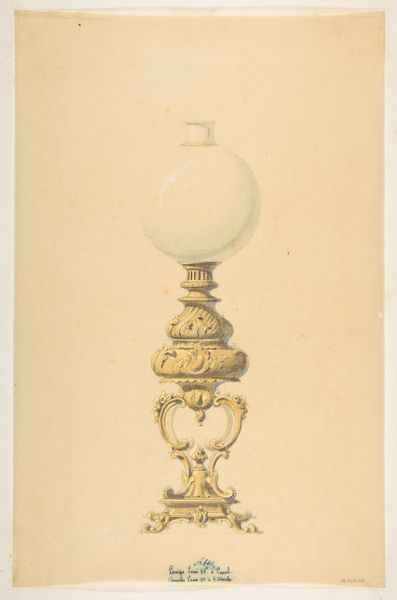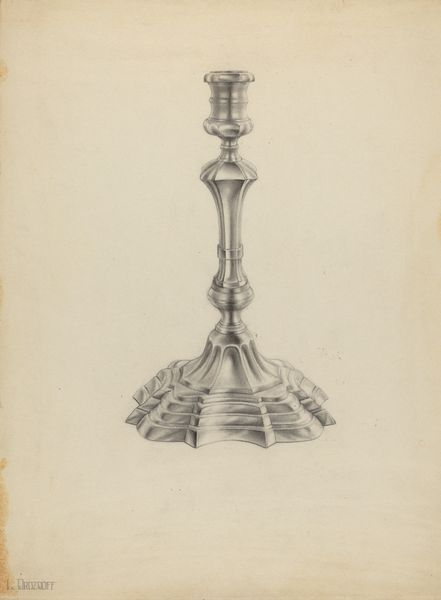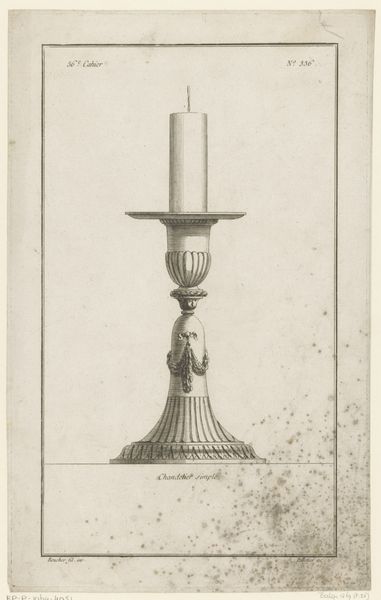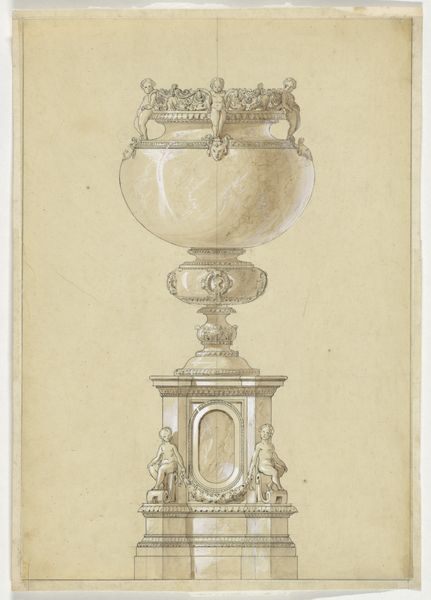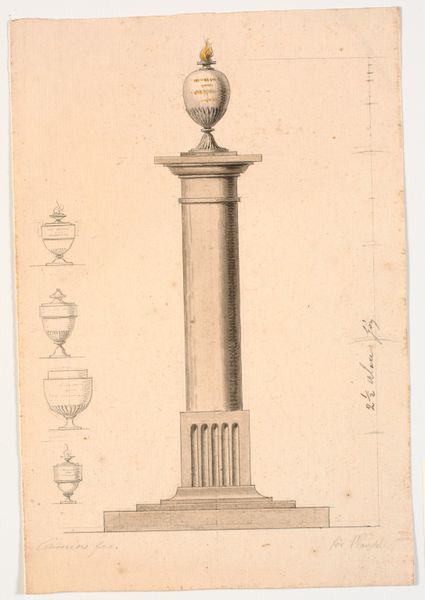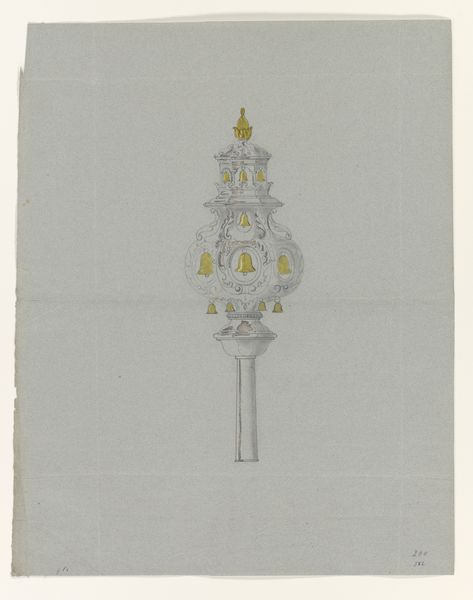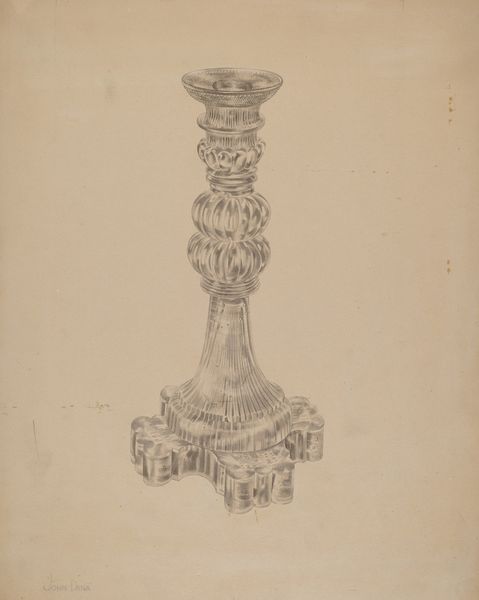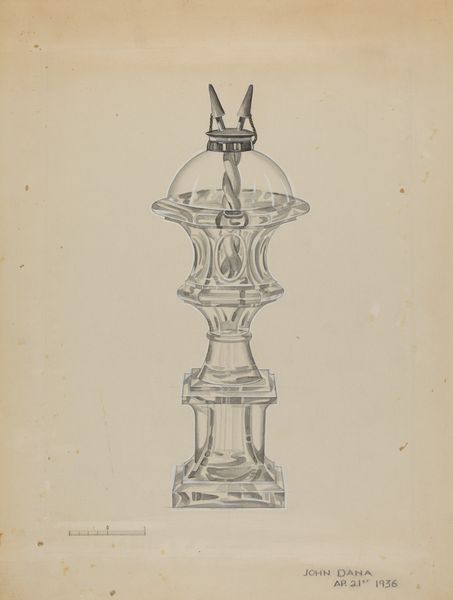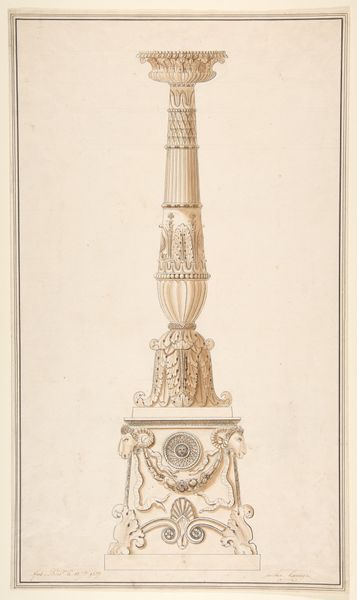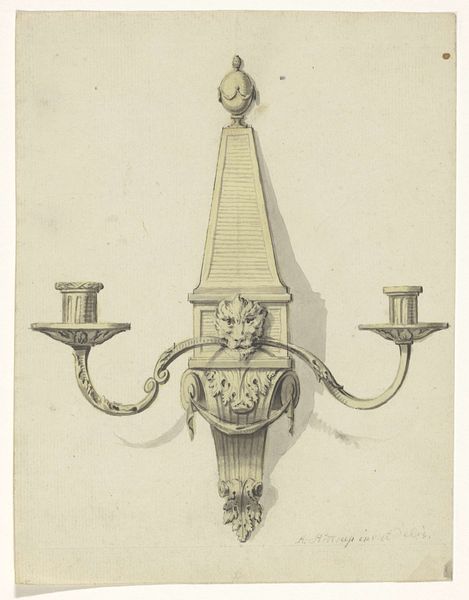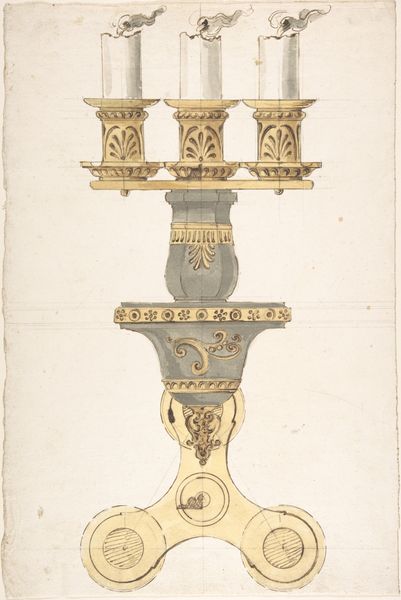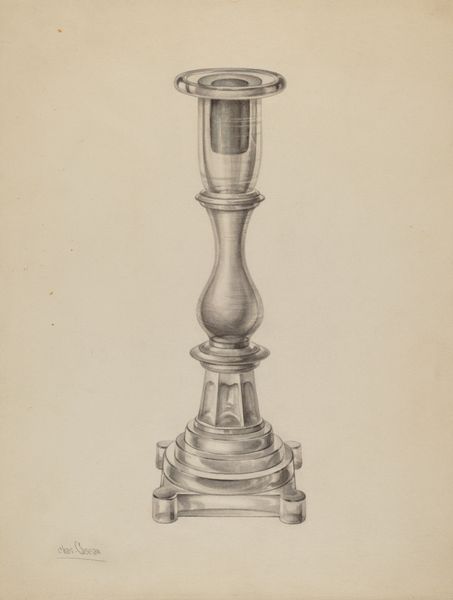
Dimensions: sheet: 17 1/8 x 9 15/16 in. (43.5 x 25.2 cm)
Copyright: Public Domain
Curator: Here at the Metropolitan Museum of Art, we have an intriguing piece: a 19th-century design for an oil lamp. The anonymous artist rendered it in watercolor, and the drawing also has print elements. Editor: It’s certainly detailed. My first thought is that it's more like a miniature cathedral than a lamp, really—ornate, almost aggressively so. What exactly was it intended for? Curator: Its style harkens back to the Gothic period, which experienced a revival in the 19th century. These design drawings played a key role in how historical styles were reinterpreted and implemented in contemporary society. They would circulate among workshops and become the foundation for commissioning further design objects, feeding the demand from an increasingly affluent middle class for historically-inspired domestic goods. Editor: So, mass-produced gothic, if you will? I'm particularly drawn to the rendering of light in the glass sphere – that watercolor wash mimics the way the glass would both refract and diffuse the light, hinting at the materiality of its intended form. The designer clearly understands not only aesthetic styles, but also manufacturing and industrial considerations. Curator: Precisely. It points to a burgeoning industry focused on democratizing design, making luxury aesthetics available to a wider public beyond the aristocracy, fundamentally changing the accessibility to design. Editor: It also raises questions about artistic labor, doesn't it? The level of detail suggests meticulous handcraft, yet the intention seems to have been mass production. This creates a fascinating tension between the unique artisan skill required for the initial design and its replication in the market. Curator: A critical tension indeed. It embodies the push and pull of tradition and innovation that defines much of 19th-century artistic production. These lamps could have populated drawing rooms and public buildings, reshaping interior environments with readily-available symbols of history and authority. Editor: It’s remarkable how much social and industrial history can be gleaned from a single design for something as humble as an oil lamp. It moves past pure functionality. Curator: Indeed, by investigating its materials and the process of its creation, we learn as much about cultural ambition and the commercial marketplace as we do about aesthetic tastes.
Comments
No comments
Be the first to comment and join the conversation on the ultimate creative platform.

